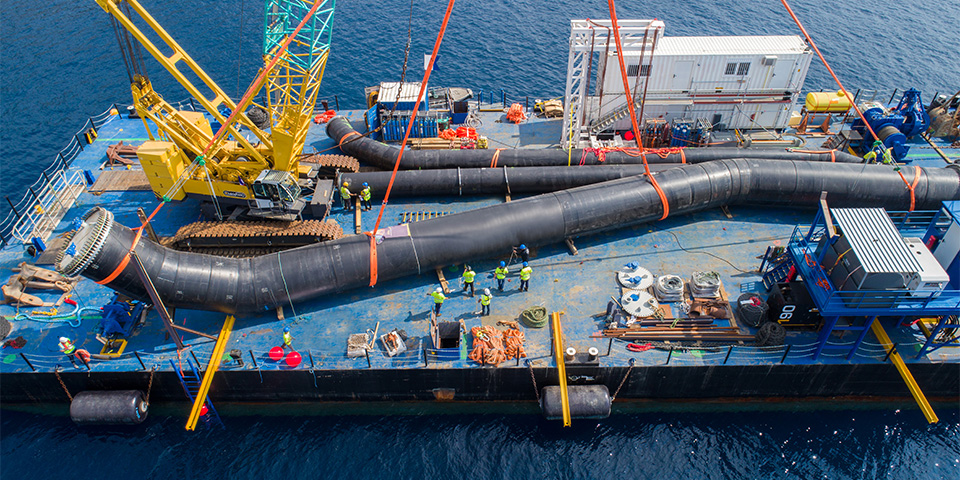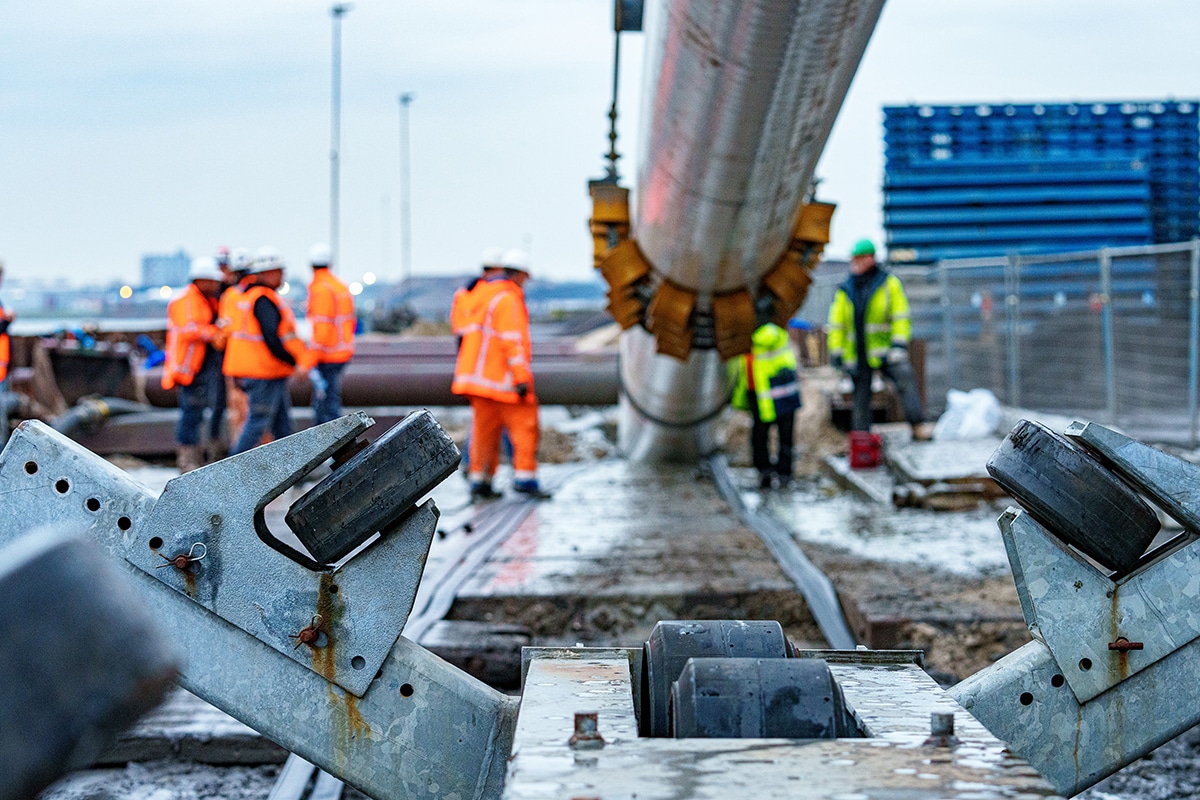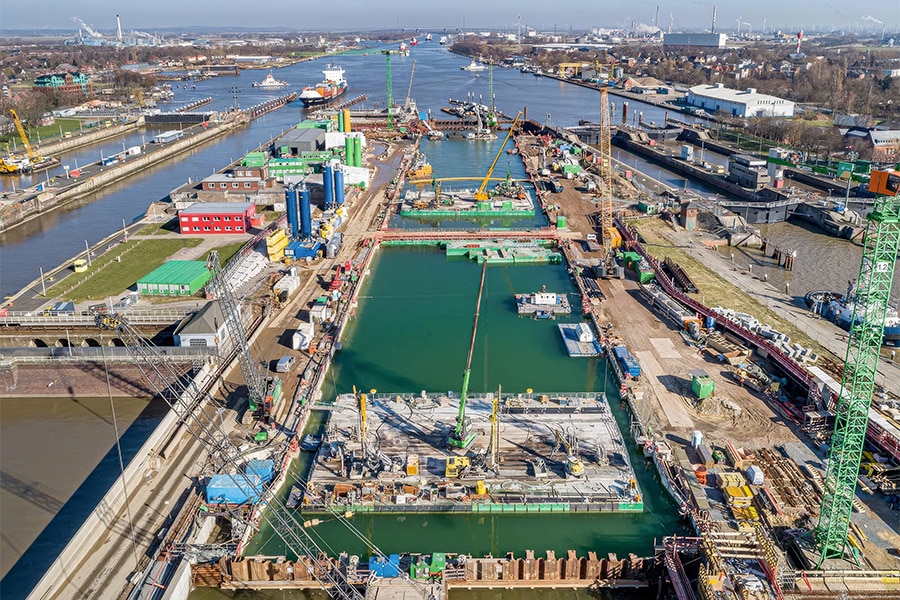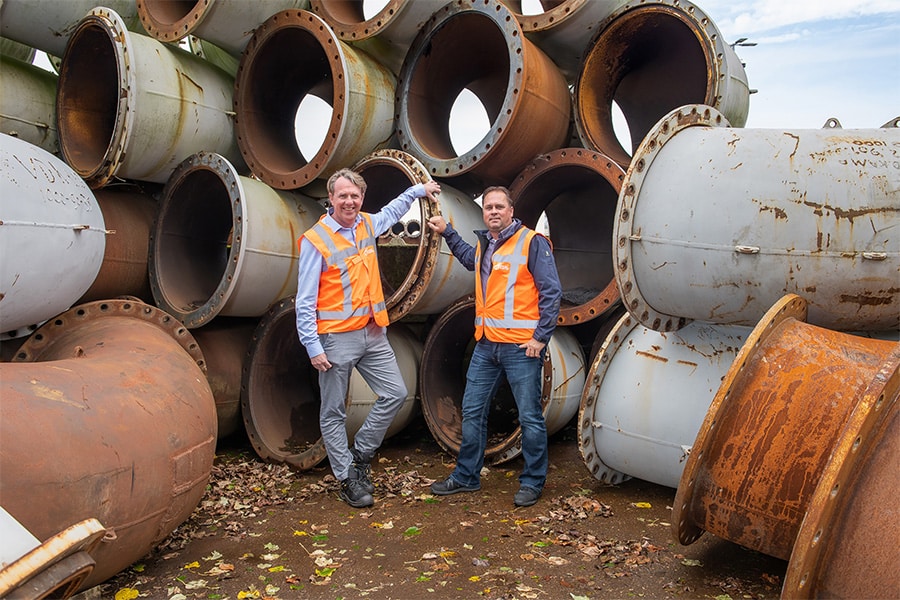
XXL pipes for new urban area Monaco
Monaco is the second smallest country in the world after the Vatican City, with an area of 2.2 km (2.2 mi)2. While the population density in Vatican City is 2,200 people per square kilometer, 19,000 people live in an area of the same size in Monaco. Clearly, therefore, Monaco is facing a permanent housing shortage. As a solution, the Monaco government has planned to expand the Principality by 60,000 square meters. In order to do so, the sea is being sought, by building a well reinforced platform of sand and concrete. AGRU Kunststofftechnik is supporting this revolutionary urbanization project with XXL pipes, which serve as drains for treated wastewater and storm water.
Right in front of the Grimaldi Forum, the most beautiful part of the Principality, Monaco is being expanded toward the Mediterranean Sea. The construction company has been commissioned to build a six-hectare complex in the sea called "Anse du portier Monaco." The two billion dollar project will forever change the topography of the Principality of Monaco. When all is completed in 2025, the "Anse du Portier Monaco" will house apartments, stores, gardens and a harbor.

The prefabricated pipes on their way to the offshore construction project. (Image: MC-Clic)
Reclaiming land by landfilling
The first steps were taken back in 2016, by moving protected marine animals to a new site so that the offshore ecosystem remains intact. Since then, the foundations have been filled with 600,000 tons of sand, from Sicily. The land thus created must withstand tidal and seismic forces. To ensure this, the new district will be secured by caisson walls, which will be placed around the new piece of land. Each caisson weighs about 10,000 tons when filled with rubble from quarries, delivered by ship. In total, some 2.87 million tons of rocky material will be dumped. After the four-and-a-half-year construction period planned for the foundation, the new coastal promenade will be 6 meters above sea level.

The Principality of Monaco is being expanded with a new, 60,000-square-meter Mediterranean district (Image: Valode & Pistre Architectes).
Custom pipe system in XXL size
The foundations will also contain the necessary infrastructure for the new district. AGRU is supplying several hundred meters of HDPE XXL pipes, 2500 mm and 1400 mm in diameter for sewer and storm water drainage. These pipes come directly from factories in Austria and the United States. For the connection between the pipes, AGRU supplies special, large flanges made of a specific steel grade. Production of the XXL fittings and pipe pieces is carried out by the installation company on the mainland, near the project, by means of butt welding. AGRU supplied the necessary welding machine for this, did the product design and provides support. Due to the enormous size of the prefabricated pipe pieces, they are transported to the work site by boat for installation offshore.
Installation on the erratic seabed places high demands on man and material. Because salty seawater, ocean currents and rocky terrain create difficult conditions and a harsh environment for any material, the general contractor selected AGRU XXL pipes and fittings made of PE 100-RC. PE 100-RC's high resistance to slow cracking results in better point loading where needed. This ensures higher safety and longer life under the harsh conditions. The corrosion resistance and flexibility of the PE 100-RC pipeline also makes this choice ideal for this offshore project. After adding ballast, the prefabricated pipe sections are sunk to the seabed, towards a pre-excavated trench. On the seabed, the individual sections are connected by divers using flanges. AGRU is contributing significantly to the success of this project in highly sensitive area by providing intensive technical advice, assistance with pipe layout and laying techniques, as well as on-site training in welding.




